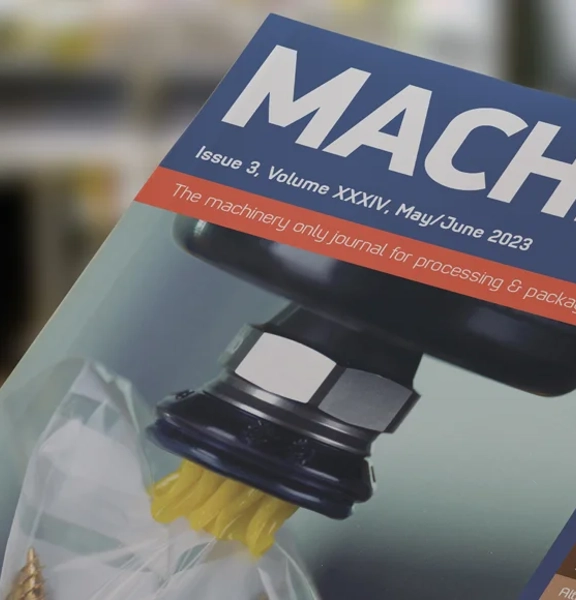Become a member
Take advantage of exclusive member benefits, world class events, networking and specialist support








 Become a member
Become a member 

19 March 2025
Herma has joined machinery-builder Benner in developing a system that is optimised for preset numbers of bags, but can handle other pack types as well, says the label expert.
This is probably the first machine of its type, says Herma, using this labelling technique for medium speed requirements of between 20 and 30 multipacks per minute.
Individual, ready-filled bags are transported up a sloping conveyor to a height of around 2m. There, the bags are fed into a compartmentalised conveyor where each pocket receives a defined number of horizontally-positioned bags. Two Herma 500 label applicators, one on each side, then apply a pre-perforated label to form the multipacks.
As standard, says Herma, the machine is designed for bags measuring around 65 x 150 x 25mm. But it is flexible enough to allow wider products to be bundled, thanks to four adjustable side guides on the shaft in which the bags are located.
The machine is characterised by its outstanding precision, says Ilyas Zorla, managing director of German-based Benner MSA. To ensure that the individual bags can be easily separated, the label perforations must be positioned exactly at the gap between the bags.
"This is why the Herma 500 is invaluable as a label applicator," says Zorla. "It has a master encoder. In other words, the labelling speed is always controlled by the actual product speed.”
Inconsistencies in bag height, due to the solid contents or gas flushing, can lead to discrepancies of up to 5mm per bag, or 15mm across a triple multipack, he points out. But in this case, a patented compensating element offsets these differences.
According to Herma, the system fits inside a footprint of just 4m2.
There are other manufacturers of label-based multipack machines, Zorla admits. But these tend to be single-format systems designed for one product manufactured in extremely high volumes, such as a “well-known biscuit snack”.
"These machines are not only very large, they are also very, very fast and can easily run at 700 cycles per minute," he reports.
The speed of the Benner machine, of up to 30 multipacks a minute, is adequate for the needs of most producers of nuts, dried fruit or cereal bars, for example, says Zorla, where upstream bagging or wrapping might run at 60-80 cycles per minute.
01440 766719